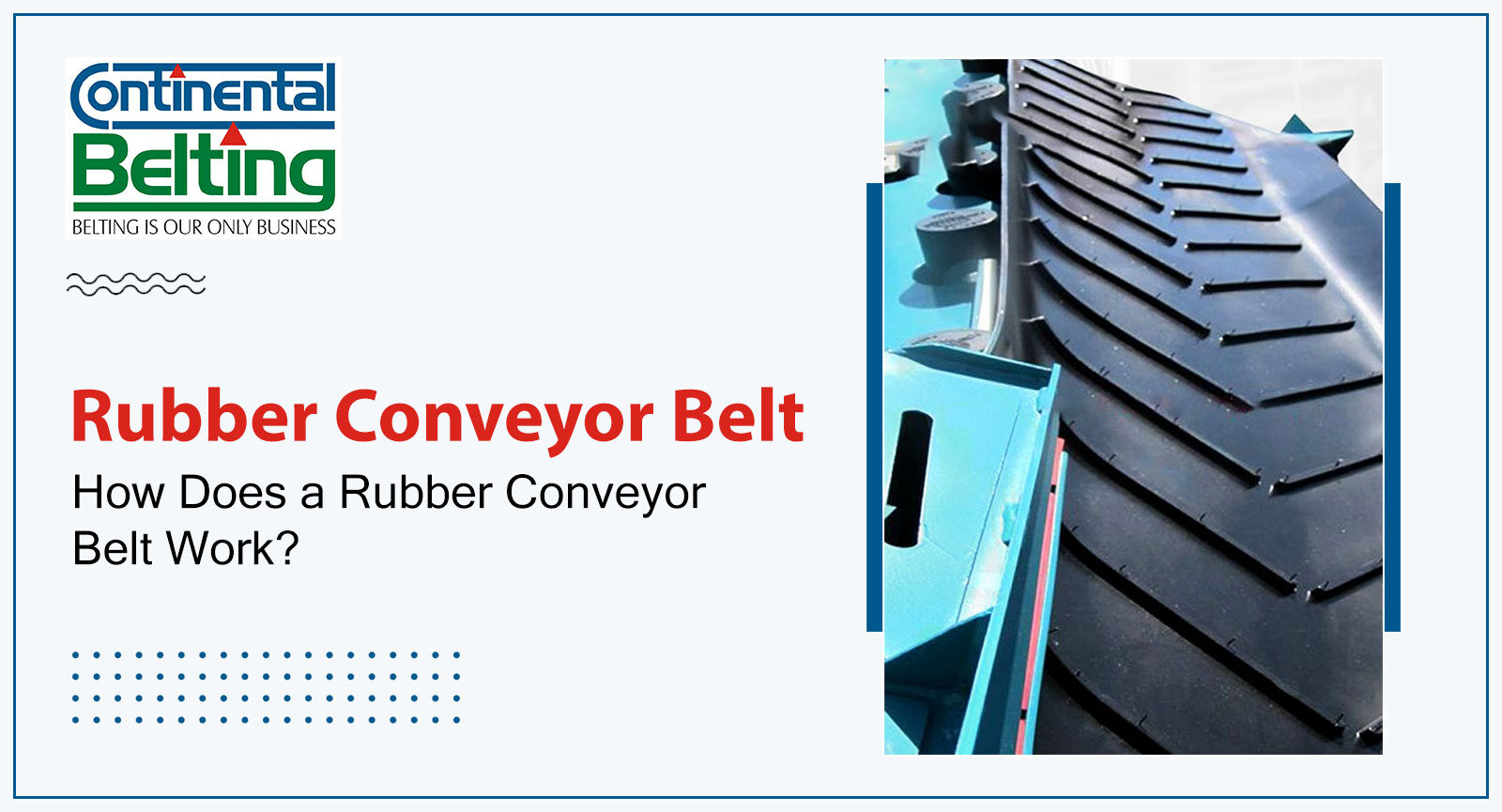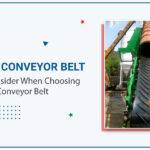The seemingly simple rubber conveyor belt is a workhorse of many industries. From transporting groceries in supermarkets to hauling massive rocks in quarries, these belts keep materials on the move efficiently. But have you ever wondered how exactly a rubber conveying belt functions?
The Core Mechanism
At its heart, a rubber conveyor belt system is quite straightforward. It consists of a continuous loop of strong, flexible rubber belting that travels around a series of pulleys. One or more pulleys are powered by electric motors, causing them to rotate. Friction between the pulleys and the belt surface creates the force that propels the belt forward.
Here are the key Components of a Rubber Conveyor Belt:
- Belting: This is the heavy-duty rubberized strip that forms the endless loop. It’s typically made of multiple layers, with a strong carcass providing structural integrity and a top cover designed for specific applications (e.g., abrasion resistance, and heat tolerance).
- Drive Pulley: This motorized pulley is the engine of the system. The motor’s rotation transfers to the pulley, which creates friction with the belt, causing it to move.
- Idler Pulleys: These unpowered pulleys support the belting throughout its path and help maintain proper tension. They can also be used to change the direction of the belt.
- Motor: The electric motor provides the power to rotate the drive pulley, ultimately driving the entire conveyor system.
- Frame: The sturdy frame of a rubber conveyor belt supports all the components and ensures the conveyor operates smoothly.
The Movement
As the drive pulley rotates due to the motor’s power, friction causes the rubber belting to adhere to the pulley’s surface and move along with it. This continuous rotation pulls the entire loop of belting forward, creating a smooth, continuous motion for material transport.
The direction of the belt’s movement depends on the rotation of the drive pulley. Both the drive pulley and any other motorized pulleys must spin in the same direction to ensure the belt travels consistently.
Additional Considerations
While the core principle is simple, several factors contribute to the smooth operation and efficiency of a rubber conveyor belt:
- Tensioning: The belting needs to be kept at the appropriate tension to prevent slippage and ensure proper tracking. This is usually achieved by adjusting the position of end pulleys.
- Support Rollers: For long conveyors or those carrying heavy loads, rollers are placed along the underside of the belting to provide additional support and prevent sagging.
- Skirts and Plows: These components help contain material on the belt and prevent spillage along the edges.
- Safety Features: Conveyor belts often incorporate safety features like emergency stop buttons and trip switches to ensure operator safety.
Features of Rubber Conveyor Belt
The versatility of these conveyor belts comes from their adaptable features:
- Durability: Rubber conveyor belts are built to withstand harsh environments and demanding workloads. They can resist abrasion, impact, chemicals, and extreme temperatures depending on the specific rubber compound used.
- Customizability: Belting can be customized in terms of thickness, width, and strength to suit the specific application. Different top covers offer properties like cleating for increased traction or smooth surfaces for delicate items.
- Efficiency: Rubber belts offer a very efficient way to transport materials. They require relatively low maintenance and have a long lifespan.
- Versatility: Conveyor belts can be designed for various inclines and can handle a wide range of materials, from bulk solids to packaged goods.
Conclusion
Rubber conveyor belts play a crucial role in keeping industries running smoothly. Their simple yet effective design, combined with their durability and adaptability, makes them a cornerstone of modern material handling systems.



